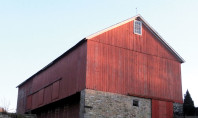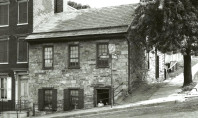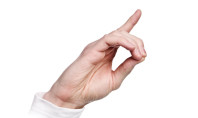Mardi Gras Fun Facts
Mardi Gras is known as one of the biggest parties of the year, anchored in New Orleans. The city is packed with visitors from around the world wearing purple, green and gold, and adorned with long beads caught from the beautiful floats. Revelers throw balls, play music, have picnics and people watch during one of the country’s most famous spectacles.
Here are 13 interesting facts about this one-of-a-kind celebration.
1. The name Mardi Gras means Fat Tuesday, a day of feasting before the start of Lent on Ash Wednesday. This day is also known as Shrove Tuesday.
2. Depending on where you are, Mardi Gras celebrations can span more than a month, either starting on Twelfth Night or being confined to the 3 days before Mardi Gras day itself.
3. In addition to celebrations in New Orleans, other famous celebrations of the day take place in Rio; Baranquilla, Colombia; Port-of-Spain, Trinidad and Tobago; Mazatlan, Mexico and Quebec City, Canada.
4. The first known Mardi Gras parade in New Orleans took place in 1837, though prior to that it was celebrated in Mobile, Alabama in 1703.
5. Floats became part of the New Orleans celebration in 1837 and since then have become an integral aspect of festivities.
6. The official colors of Mardi Gras have meanings. Purple is for justice, gold is for power and green is for faith. These were chosen by the Grand Duke of Russia in 1857.
7. Mardi Gras became a legal holiday in Louisiana in 1875.
8. Krewes, which are parade groups, started as private social clubs. The oldest of these is Comus which was founded in 1857.
9. The tradition of handing out items to the audience dates back to Renaissance Europe. In New Orleans, the first person to do that was a Krewe member dressed as Santa Claus in the 1880s.
10. More than 500,000 king cakes are sold each year in New Orleans between January 6 and Fat Tuesday, and another 50,000 are shipped out-of-state via overnight courier. The sugar-coated pastries include a tiny plastic baby doll inside; the person who finds it is declared “king” and must buy the next cake or give the next party.
11. An economic impact study released by the University of New Orleans estimates that Mardi Gras generates over $840 million annually.
12. The largest of about one dozen Mardi Gras supply houses in New Orleans sold 41 million strands of beads for Carnival, 1991.
13. The super parades of Endymion and Bacchus, scheduled for the Saturday and Sunday before Fat Tuesday, feature a combined total of 75 floats, 60 marching bands and more than 250 units. Their 2,300 members toss more than 1.5 million cups, 2.5 million doubloons and 200,000 gross of beads.
14. Hurricane Katrina slammed into New Orleans at the end of August 2005. Many of the parade floats were safely stored before the hurricane; some of the most popular parade routes, including St. Charles and Magazine Streets, were spared in the storm. So, a few months after the hurricane, the city decided that Mardi Gras would go on.
15. One of the most photographed objects in all of Mardi Gras is the Boeuf Gras (fatted bull) float in the Rex parade. While once a live bull was included in the procession, now a huge papier-mâché’ figure appears.
Sources: New Orleans Convention and Visitors Bureau and parkrideflyusa.com

















